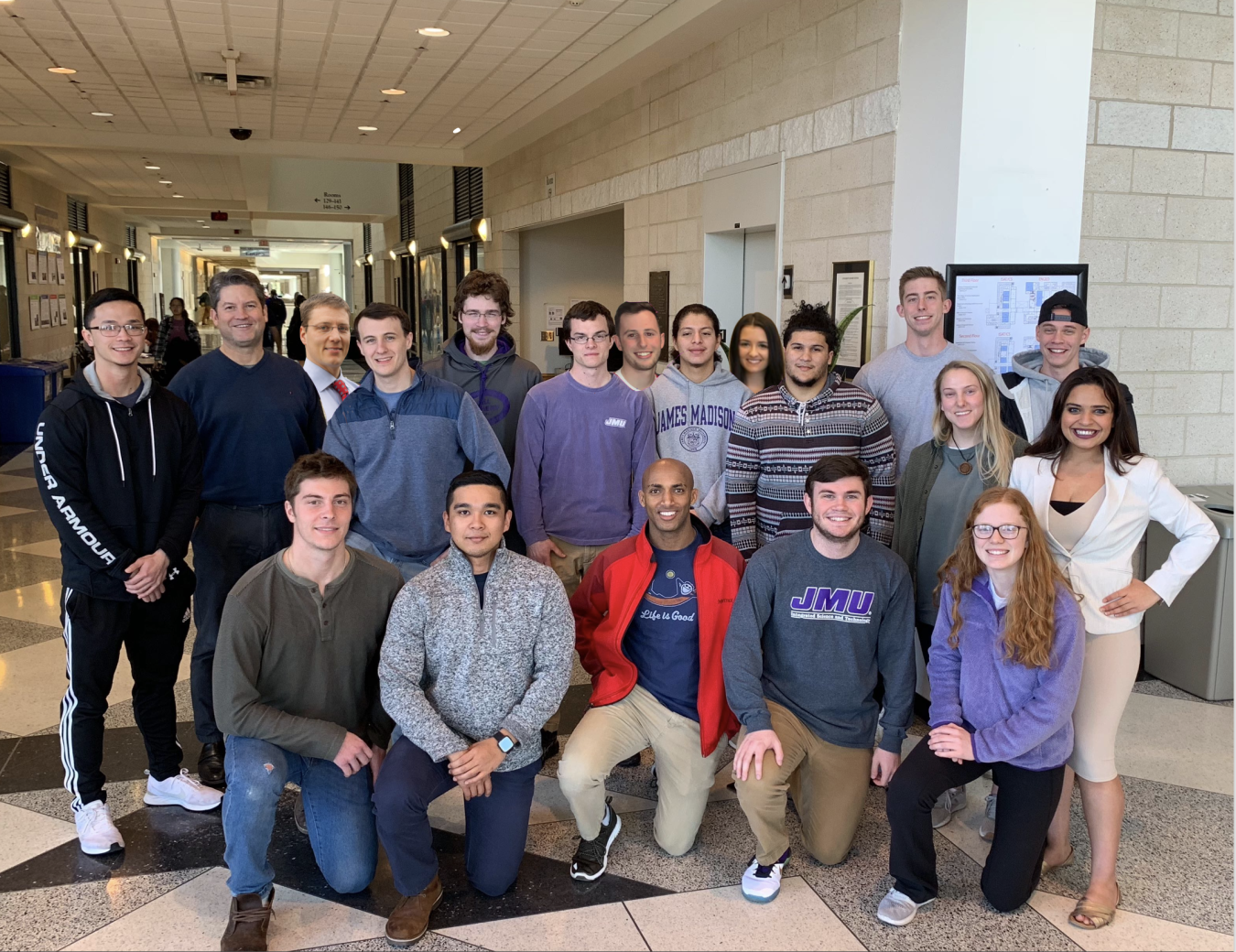
Team Name
James Madison University
Team Turbine
As the competition is approaching, the engineering team has reached the implementation phase in its design process. The design decisions and testing results from last year have informed the development of the new turbine design. During the fall 2018 semester, the team revisited the design decisions and modified various subsystems to achieve maximum performance and address reliability issues that occurred at the 2018 competition.
On the mechanical side, the team is considering whether to implement a new pitch system or abandon it in favor of a fixed rotor design. Most design decisions pertaining to blades, generator, yaw, and the structural system have been finalized. As for electrical systems, the final circuit has been designed and all electrical components including sensors, microcontroller, and wiring have been integrated within an enclosure.
Game Plan
Since the beginning of 2019, the team dedicated efforts toward troubleshooting subsystems and integrating components into an alpha prototype. In this phase the team has evaluated design decisions and iterated in order to optimize its design.
In the weeks leading up to the competition, the team will continue to test the prototype, further refine the design, and troubleshoot as needed. Once the system is fully refined the team will prepare for competition and complete the capstone project by sharing knowledge and experiences gained through documentation that will be shared with students who will participate in the future.
The siting and financial analysis team has been collecting data to supplement that which was collected last year. The team has interacted with EAPC, a wind firm from New England that has shown interest in wind development in Virginia. The team has further refined its Openwind® model and researched financial costs and is now developing a model using the System Advisory Model software. The team is also researching incentives and is developing resources that will illustrate how the site may likely appear after a project is developed. Results from simulations and data collected from the site will inform the development of a preliminary business model for development.
The team has also been conducting policy research on the local, state, and federal level. We have analyzed Virginia’s Wind Permit by Rule in detail to ensure that developers of this hypothetical wind plant understand the required regulatory tasks prior to construction. Further, the team has identified endangered and threatened species that may be active within the proposed siting area and is currently considering various mitigation techniques to address potential wildlife impacts, loss of habitat, biodiversity implications, or impacts on soil and water.
Community Engagement
Members of the team will interview faculty and other experienced researchers within the James Madison University community to learn more about the species identified that could be impacted by a new wind farm. This team is also developing a geographic information system (GIS) mapping tool to aid in the identification of areas that are most sensitive visually, where historic and cultural resources have been identified, and where wildlife endangerment might be most concerning including in adjacent counties in Virginia and West Virginia. Openwind® and ArcGIS are being used for the GIS mapping. At present, the Virginia counties are up-to-date with GIS data and the next focus will be on the counties in West Virginia.
Another deliverable in progress is an informative, web-based platform where community members interested in the project can obtain information about the potential for wind development at the site the team has studied. The team has also made efforts to present to Rockingham county officials and plans to visit the proposed site. During this visit, we will engage with local landowners to understand the ultimate impact our wind farm will have on the community.
This webpage was submitted to the U.S. Department of Energy by the team.
Reports
This webpage was submitted to the U.S. Department of Energy by the team.

